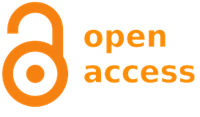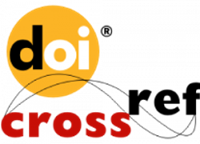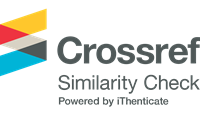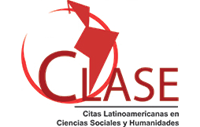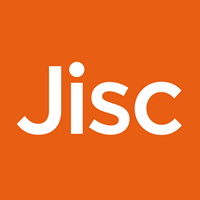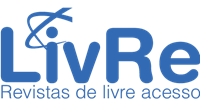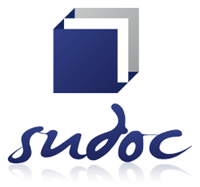Training networks: mainstay for learning and intertwined reflections
Abstract
This reflection aims to understand the existence of epistemological implications, in human symbiosis and technoscience, which call into question reason and hierarchies of power with nods to the existence of vital niches filled with deep interdependence from the beginning of the evolutionary process. This is a qualitative study of the bibliographic type, whose main result means to affirm that human evolution emerges in a very complex uterus, which shares nature, technologies and languages. It is unimaginable to scale the complexity of interactions, both collaborative and conflictive, of the ingredients of these interactive coevolutions - human and technosciences. Therefore, a profound transformation in the dynamics of learning, made possible by digital networks is present. It is concluded that the training networks are an effective exercise of resistance and desecration of the instructional mechanisms originating from political-pragmatic convictions that ignore or pretend to ignore the potential of the networks, such as collaborative networks, interdependence networks and interactive presences. Formative networks may enable other positions and other connections in the face of the technobureaucratization of the State, thirsty for quantitative and productivist diagnoses, carried out by obscure plans and goals that, gradually, threaten to empty utopias and the hopes of open and possible futures.
Downloads
References
Abar, C. (2004). O Conceito Fuzzy. Recuperado de https://www.pucsp.br/~logica/Fuzzy.htm
Adorno, T. (1995). Educação e emancipação. Rio de Janeiro, RJ: Paz e Terra.
Agamben, G. (2007). Profanações. São Paulo, SP: Boitempo.
Agamben, G. (2013). A comunidade que vem. Belo Horizonte, MG: Autêntica.
Assmann, H. (2005). Redes digitais e metamorfose do aprender. Petrópolis, RJ: Vozes.
Baitello Junior, N. (2018). A carta, o abismo, o beijo: os ambientes de imagens entre o artístico e o midiático. São Paulo, SP: Paulus.
Capra, F. (1996). Teia da vida. São Paulo, SP: Cultrix.
Carvalho, A. F. (2016). A função-educador na perspectiva da biopolítica e da governamentalidade neoliberal. Cadernos IHU ideias, 244(14), 5-20.
Dardot, P., & Laval, C. (2016a). A nova razão do mundo: ensaios sobre a sociedade neoliberal. São Paulo, SP: Boitempo.
Dardot, P., & Laval, C. (2016b). Neoliberalismo e subjetivação capitalista. O Olho da História: Revista de Teoria, Cultura, Cinema e Sociedades, 22, 1-15.
Deleuze, G. (1992). Conversações. São Paulo, SP: Editora 34.
Deleuze, G., & Guattari, F. (1995). Mil Platôs: capitalismo e esquizofrenia. Rio de Janeiro, RJ: Editora 34.
Guerrini, I. A. (2010). Aplicações de caos e complexidade em ciências da vida. Cadernos IHU ideias, 8(129), 1-21.
Maturana, H. R. (2001). Cognição, ciência e vida cotidiana. Belo Horizonte, MG: UFMG.
Morin, E. (2010). Ciência com consciência. Rio de Janeiro, RJ: Bertrand Brasil.
Papst, J. (2005). Tornar todos os saberes acessíveis para todos em toda a parte. Revista do Instituto Humanitas Unisinos, 3(87), 12-14.
Follmann, J. I. (2005). A segmentação do conhecimento é um fruto perverso da modernidade. Revista IHU ON-LINE, 11-15. Recuperado em 25 de junho de 2014 em https://www.ihuonline.unisinos.br/media/pdf/IHUOnlineEdicao153.pdf
Severino, A. J. (2002). Educação e transdisciplinaridade. Rio de Janeiro, RJ: Lucerna.
Stengers, I. (2015). No tempo das catástrofes resistir à barbárie que se aproxima. São Paulo, SP: Cosac Naify.
Stewart, I. (1991). Será que Deus joga dados?: a matemática do caos. Rio de Janeiro, RJ: Jorge Zahar.
Strieder, R. (2004). Educar para a iniciativa e a solidariedade. Ijuí, RS: Unijuí.

This work is licensed under a Creative Commons Attribution 4.0 International License.
DECLARATION OF ORIGINALITY AND COPYRIGHTS
I declare that this article is original and has not been submitted for publication in any other national or international journal, either in part or in its entirety.
The copyright belongs exclusively to the authors. The licensing rights used by the journal are the Creative Commons Attribution 4.0 (CC BY 4.0) license: sharing (copying and distributing the material in any medium or format) and adaptation (remixing, transforming, and building upon the material thus licensed for any purpose, including commercial purposes) are permitted.
It is recommended that you read this link for more information on the subject: providing credits and references correctly, among other crucial details for the proper use of the licensed material.








